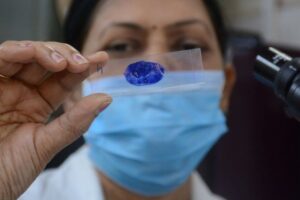So, there’s this spacecraft called Peregrine, right? It took off last week, all geared up to be the first US mission to land on the moon in over 50 years. Exciting stuff, huh? Well, hold on to your space helmets, because it’s not exactly going as planned.
Lunar Dreams Go Up in Smoke
Peregrine, the brainchild of Astrobotic Technology, was supposed to make history with a soft landing on the moon. But, and there’s always a but, a fuel leak messed things up big time. NASA’s hopes for their Commercial Lunar Payload Services program took a hit with this failed moonshot.
Astrobotic spilled the beans on Sunday, confessing that they had to pull the plug on the lunar dreams. Why? Well, a fuel leak left Peregrine without enough juice to complete the lunar touchdown. An “anomaly” also made its solar-powered battery play hide-and-seek with the sun. Not the best day at the office for the Astrobotic team.

Back to Earth in Flames
Facing a lunar mission gone awry, Astrobotic decided to send Peregrine on a one-way ticket back to Earth. But here’s the kicker – it’s not going to be a smooth landing. Nope, they’re letting it disintegrate midair. The official term? A fiery reentry. Why? Because that fuel leak and wonky propulsion system made it a ticking space bomb.
Astrobotic reassures us that Peregrine’s descent won’t be a danger zone for us Earthlings. It’s going to burn up in the atmosphere, leaving nothing but stardust behind. They’re calling it a responsible and safe exit strategy. You win some, you lose some.
Options on the Table: Trash in Space or Moon Crash?
Astrobotic could’ve just left Peregrine drifting in space, forever alone in the cosmic abyss. But nope, that was too risky. Imagine a damaged spacecraft bumping into other stuff up there, like satellites. Not cool.
Crash-landing on the moon was another option. Many spacecraft have done it before, intentionally or not. But Astrobotic decided against it, thinking Earth was a better landing spot. And so, the decision was made to let Peregrine meet its fiery fate back on our home turf.
Critical Errors and the Almost Moon Landing
If Peregrine had pulled off the moon landing, it would’ve been the first US spacecraft to do so since the legendary Apollo 17 mission in 1972. But alas, just hours after liftoff on January 8, Astrobotic had to break the news that a soft landing wasn’t in the cards.
Mixed Bag of Wins and Losses in Space
In the midst of all this space drama, Astrobotic managed to power up some science instruments on Peregrine. NASA’s Neutron Spectrometer System and the Linear Energy Transfer Spectrometer gathered data on radiation levels in space. Not exactly what they planned, but NASA still found it valuable.

